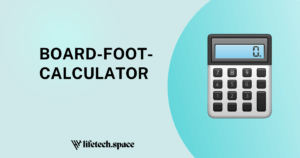Introduction
Transforming your yard into a lush oasis starts with the right amount of soil, but overbuying or underestimating can derail your budget and timeline. Enter the dirt calculator, an essential online tool that estimates the volume of topsoil, fill dirt, or mulch needed for landscaping projects. Whether you’re building raised beds, leveling a lawn, or prepping a garden plot, this free dirt calculator tool ensures you order precisely what’s required in cubic yards or tons. In this in-depth dirt calculator guide, we’ll uncover how an online dirt calculator operates, its core formula, and insider tips to avoid common pitfalls—all to help you dig into your project with confidence from the get-go.
What Is a Dirt Calculator?
A dirt calculator is a user-friendly digital estimator designed to compute the volume and weight of soil or dirt required for outdoor projects like gardening, landscaping, or hardscaping. By entering basic measurements such as length, width, and depth, it calculates the cubic yards or feet of material needed, often converting to tons based on soil density for accurate purchasing from suppliers.
Consider a backyard makeover: You’re installing a 10×15-foot flower bed at 6 inches deep. Manually figuring the volume could lead to waste or shortages, but a dirt calculator online instantly reveals about 4.6 cubic yards—enough to cover without excess. This tool differentiates between topsoil (nutrient-rich for planting), fill dirt (for grading and stability), and mulch (for weed suppression and moisture retention), making it versatile for raised beds, lawns, or erosion control. With no advanced skills required, it’s a staple for DIYers and pros alike, drawing from standard densities like 1.0–1.3 tons per cubic yard for loose topsoil.
Free and accessible, these calculators prevent costly errors, ensuring your landscape vision takes root efficiently.
How to Use the Dirt Calculator
Harnessing an online dirt calculator is a breeze, compatible with phones for on-site tweaks or desktops for detailed planning. This dirt calculator guide walks you through the steps to get precise estimates every time:
- Step 1: Measure Your Area
Determine the length, width, and desired depth (e.g., 6 inches for topsoil) of your project space. Use feet for consistency, converting inches (divide by 12). - Step 2: Select a Tool
Launch a free dirt calculator tool from sites like Inch Calculator, Omni Calculator, or Lowe’s for reliable, landscaping-focused results. - Step 3: Input Dimensions
Enter length, width, depth, and select material type (topsoil, fill dirt) to auto-adjust for density and waste (add 10% for compaction). - Step 4: Generate Results
Click calculate to view cubic yards, cubic feet, and tons—plus cost estimates if you input supplier prices. - Step 5: Refine and Order
Adjust for irregular shapes by breaking into sections; save outputs for delivery quotes from local yards.
Quick Reference Table: Common Landscaping Projects and Depths
| Project Type | Typical Depth | Example Inputs (ft) |
|---|---|---|
| Raised Bed | 12 inches | 4 x 8 x 1 |
| Lawn Leveling | 2–4 inches | 20 x 30 x 0.25 |
| Garden Bed | 6 inches | 10 x 15 x 0.5 |
| Fill for Patio | 4–6 inches | 12 x 16 x 0.42 |
From mobile measurements in the garden to desktop designs at home, the dirt calculator online streamlines your soil strategy seamlessly.
Dirt Calculator Formula Explained
The dirt calculator formula revolves around basic geometry: Volume = Length × Width × Depth. This yields cubic feet, which converts to cubic yards (divide by 27) for bulk orders. To estimate weight in tons: Weight = Volume (yd³) × Density (tons/yd³), where density varies—1.0–1.3 for dry topsoil, 1.5–1.7 for wet or compacted dirt.
Dissecting the elements:
- Length & Width: Horizontal dimensions of the area (e.g., 10 ft x 15 ft for a bed).
- Depth: Layer thickness in feet (e.g., 6 inches = 0.5 ft); crucial for nutrient depth in planting.
- Volume Conversion: Cubic feet ÷ 27 = cubic yards; add 10–15% for settling.
- Density Factor: Adjusts for material—loamy topsoil at 1.1 tons/yd³ vs. sandy fill at 1.2.
For irregular areas, sum multiple rectangles. This keeps estimates grounded in reality.
Example Calculation
Picture a 10×15-foot garden bed needing 6 inches of topsoil (dry density: 1.1 tons/yd³).
- Convert depth: 6 inches ÷ 12 = 0.5 feet.
- Volume in cubic feet: 10 ft × 15 ft × 0.5 ft = 75 cu ft.
- Convert to yards: 75 ÷ 27 ≈ 2.78 cu yd.
- Add 10% waste: 2.78 × 1.1 ≈ 3.06 cu yd (round to 3.5 for safety).
- Weight: 3.06 × 1.1 ≈ 3.37 tons.
Order 3.5 cubic yards to cover costs around $100–$200 delivered. A free dirt calculator tool automates this, factoring variables on the fly.
Why Use an Online Dirt Calculator?
Opting for an online dirt calculator elevates your landscaping game by blending precision with practicality. Key advantages include:
- Cost Savings: Prevents overordering—e.g., excess soil at $30–$50/yd³ adds up fast.
- Time Efficiency: Instant results vs. manual math, freeing you for planting.
- Customization: Handles shapes, densities, and add-ons like mulch layers seamlessly.
- Accessibility: The dirt calculator online works on any device, ideal for site visits.
- Free & Expert-Backed: Tools from Lowe’s or Omni use industry standards for trustworthy outputs.
- Project Versatility: From small veggie patches to large fills, it adapts to pros and hobbyists.
In essence, an online dirt calculator turns guesswork into green-thumb mastery, optimizing every scoop.
Tips for Accurate Results
Achieve spot-on estimates with your dirt calculator by heeding these seasoned pointers:
- Measure Precisely: Use a tape or laser tool; account for slopes by averaging depths.
- Factor Moisture: Wet soil compacts 20% more—opt for dry density unless specified.
- Include Buffer: Add 10–15% for uneven spreading or settling over time.
- Match Material: Topsoil for growth, fill dirt for base; check supplier densities.
- Break Complex Shapes: Divide curves into rectangles for summed accuracy.
- Verify Units: Stick to feet/yards; cross-check with supplier calcs for delivery fees.
These tweaks make your free dirt calculator tool a reliable partner for flawless foundations.
FAQs About Dirt Calculator
What is a dirt calculator used for?
A dirt calculator estimates volume and weight of soil or fill for landscaping, gardening, or leveling projects based on dimensions and material type.
How accurate is the dirt calculator?
Very accurate with precise inputs and density adjustments; expect ±5–10% variance due to compaction or moisture.
Can I use a dirt calculator on my phone?
Yes, most dirt calculator online tools are mobile-friendly for quick field calculations during projects.
Is a dirt calculator free to use?
Definitely—sites like Inch Calculator and Omni provide free dirt calculator tools without any fees or sign-ups.
How much does a yard of dirt cost?
Typically $20–$60 per cubic yard delivered, varying by type and location; use the tool to factor in totals.
Conclusion
A dirt calculator is the unsung hero of successful landscaping, bridging measurements to materials with ease and economy. From unraveling the volume formula and step-by-step usage to project benchmarks and pro advice, this dirt calculator guide empowers you to cultivate without compromise. Whether refreshing a modest plot or overhauling an acre, accuracy starts with the right tool. Plug into our free dirt calculator tool today—measure, calculate, and watch your landscape flourish!





